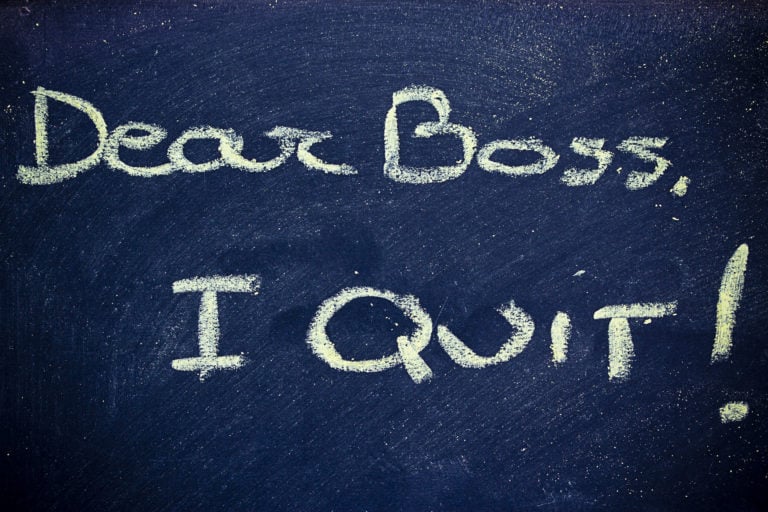After two years of a global pandemic and amid the Great Resignation, organizations are scrambling to retain key talent. Faced with a record number of resignations, employers are realizing the importance of reducing employee turnover.
Employee recognition is a tried and tested, yet sometimes overlooked, way to boost employee motivation and engagement and improve overall retention rates. Here’s how organizations can effectively use employee recognition to encourage their workers to stay and come out the other side of the Great Resignation.
What Is the Great Resignation?
The Great Resignation is a term used to describe the higher-than-usual number of people leaving their jobs during the COVID-19 pandemic.
While the pandemic started with high job losses, the tables started to turn in the spring of 2021 with a tightening of the labor market as a result of high quit rates and vacancies. Since then, the number of employees handing in their resignations has steadily increased. This peaked in March 2022, when a record 4.55 million American workers quit their jobs.
What’s Causing the Great Resignation?
Rather than a direct result of one factor in isolation, a perfect storm of longstanding factors and those unique to the pandemic has led to the voluntary mass exodus of workers that is the Great Resignation.
The pandemic hasn’t resolved some of the key concerns of workers and traditional reasons why they might feel compelled to leave a job. A recent Pew Research Centre survey found the top reasons why Americans quit their jobs in 2021 were low pay, lack of opportunities for advancement, and feeling disrespected at work.
But the complexity of living and working through a pandemic has amplified any preexisting discontent. With many trying to balance working from home with childcare and other family responsibilities, employees are demanding greater flexibility from their workplaces—and they’re prepared to look elsewhere if they don’t get it.
With high burnout rates, many have also taken the pandemic as an opportunity to reassess their priorities, especially in terms of what they expect from a job.
Another external factor contributing to the Great Resignation is the strength of the labor market. With high job vacancy rates, workers leaving their current roles have greater leverage to negotiate the terms of a new job, making quitting an attractive prospect.
There’s no silver bullet for these issues. But you can address several of them, such as the attraction of a strong labor market and employee discontent at a perceived lack of respect, via effective employee recognition.
What Is Employee Recognition?
Employee recognition encompasses all the ways an organization shows its appreciation for its employees and their contributions. Employee recognition can reward organization-wide, team-based, or personal achievements via both formal and informal actions. It can be symbolic, such as a mention in a monthly internal newsletter, or more tangible, such as a bonus.
Recognition is a key contributing factor to an individual employee’s motivation and engagement levels and overall employee retention.
Why Is Employee Recognition Important for Retention?
Effective recognition has a direct impact on an organization’s employee retention rate. An analysis by Gallup found that employees who feel undervalued and underappreciated are twice as likely to say they’ll quit within the next 12 months.
This is because recognition can impact a range of factors that contribute to employee retention, including:
- Workplace culture. Celebrating achievements in the form of a team or organization-wide event can strengthen workplace culture, reinforce shared values, and build a sense of community.
- Morale. Recognition conveys respect and value for an employee, boosting morale. Even smaller symbolic gestures have a significant impact on employee morale.
- Engagement. A recent survey found that 51% of workers are not engaged, with 13% being actively disengaged, i.e. so disengaged they spread their unhappiness to colleagues. Recognition helps employees feel more connected to their jobs by making them feel valued and appreciated.
- Productivity. Employees are motivated to work hard when they feel their efforts are recognized and rewarded. Happier employees also produce higher quality work, and recognition has a direct positive effect on employee happiness in the workplace.
- Job satisfaction. Acknowledging the value of employees gives them a sense of pride in their work, increasing their overall job satisfaction.
- Job loyalty. When an employee feels valued and their work is recognized, they’re more likely to feel a sense of loyalty to a role and organization.
Download your FREE guide on “6 Pillars for Improving Frontline Employee Retention” ⤵

How To Give Effective Recognition
There are several ways to ensure your approach to employee recognition is effective in addressing the challenges that the Great Resignation presents.
- Be specific. Recognition should directly relate to a specific outcome or achievement. This helps employees associate the recognition with a specific piece of work, reinforcing the desired behavior.
- Give timely feedback. Feedback loses its effect if it’s given a long time after the event. Providing immediate feedback to employees shows it’s genuine.
- Personalize recognition. Individuals are motivated by different forms of recognition, so don’t take a one-size-fits-all approach. Some thrive on public recognition, while others prefer more personal forms of recognition. By tailoring the reward to suit the employee, you increase its effectiveness.
- Be thoughtful. Recognizing employees’ contributions doesn’t need to cost a lot. In fact, a recent McKinsey survey found that non-financial recognition drives up to 55% of employee engagement. The key is to make it authentic and meaningful.
- Tie recognition to organizational values and goals. This encourages employees to set a good example while building a strong workplace culture and a sense of belonging.
Recognize Your Employees For Their Hard Work With The #1 Employee Recognition App
Easily make your employees feel appreciated, boost engagement, drive a culture of excellence, and raise overall job satisfaction, no matter where your employees are working from.
Formal vs Informal Recognition
Formal recognition is a structured, highly-valued form of recognition, often given through an organization-wide program. There is typically a set of criteria tied to organizational goals that employees must meet to be formally recognized. Examples of formal recognition include awards that are added to an employee’s record or a bonus scheme.
Informal recognition, on the other hand, is a less structured, more spontaneous form of recognition. It includes small tokens of appreciation, such as a congratulatory email or a free team lunch.
To address the Great Resignation’s impact, it’s important to use a combination of both formal and informal recognition techniques.
15 Employee Recognition Ideas
There are numerous ways to recognize your employees’ efforts, contributions, and achievements, including:
- Sending a congratulatory card or email
- Celebrating birthdays and work anniversaries
- Providing a morning or afternoon meal
- Acknowledging employees on social media
- Giving public praise during meetings
- Giving cash prizes or gift cards
- Giving company swag
- Awarding certificates, trophies, or plaques
- Giving bonuses
- Offering professional development opportunities
- Allowing extra time off or extended breaks
- Setting up a peer recognition program
- Starting an employee of the month wall
- Giving company stock
- Organizing team achievement trips or meals
You can mix and match these suggestions to suit your organization and individual employees.
Using Recognition to Counter the Effects of the Great Resignation
The pandemic has presented a raft of challenges and changes to the workplace, not least the Great Resignation. With employees leaving their jobs in record numbers, employers and HR departments need to find ways to retain their key staff.
Effective recognition strategies are a useful tool for motivating employees, increasing their engagement, and ultimately encouraging them to stay with an organization long term.




